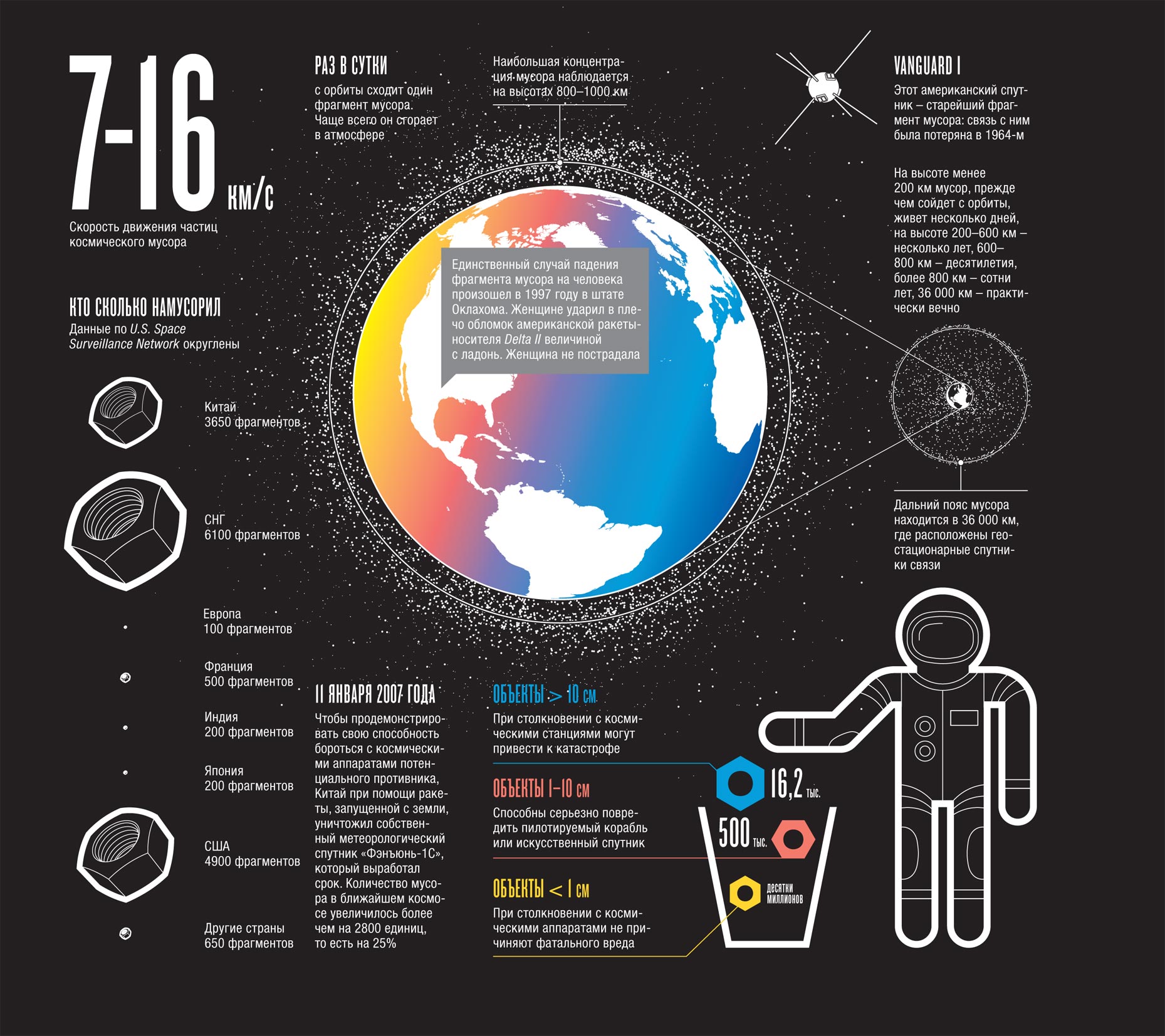Space debris can make space inaccessible to humans: infographics

On Habré more than once or twice they wrote about space debris and the problems associated with it. Now those scientists and engineers who are engaged in the design of spacecraft have much more problems than, say, 20 years ago.
In addition to problems in designing the device itself and planning its route with all the braking / acceleration and other maneuvers, now we have to take into account space debris. The collision of an apparatus worth many tens and hundreds of millions of dollars with a small fragment is fraught with the loss of an apparatus for science / business.
Well, there are more and more such debris.
The first to address the problem was NASA employee Donald Kessler, who as early as 1978 had written an article, Collision Frequency of Artificial Satellites: The Creation of a Debris Belt, with another co-author. After 13 years, he again drew attention to this problem, writing another article on this topic .
Among other things, the debris multiplies, because when two objects collide in space, they are divided into even more parts, which, colliding with something else, give rise to new objects. And so on and so forth. How much space debris is now in orbit? This is more or less clearly shown by infographics:


And here is another visualization of the problem , where all the data at the time of November 2013 is displayed.
Well, what to do with all this garbage, no one knows yet. Various companies, agencies and individuals are developing near-Earth space cleaning projects, but no one has yet begun to implement all of this.
PS By the way, while I was writing a note, I remembered a story I had read somehow on the NF where the problem of debris in space (not only in near-Earth space) was considered, in a slightly different vein. J. White - “Deadly trash” (many thanks to Sulako for pointing at the author / title). Highly recommend reading.
